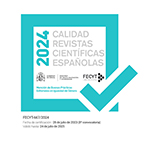Comparación del bienestar subjetivo de los niños en todo el mundo. Resultados de la tercera oleada del estudio Children’s Worlds
Resumen
Todavía se sabe muy poco acerca de cómo los niños experimentan la infancia y cómo varía en diferentes países y contextos alrededor del mundo. Las comparaciones internacionales del bienestar de los niños a menudo utilizan exclusivamente indicadores objetivos. Es solo en los últimos años cuando se han empezado a medir las visiones de los niños acerca de su bienestar en la investigación comparativa internacional. El estudio Children’s Worlds ha estado a la vanguardia de este desarrollo durante la última década. La tercera oleada del estudio, que se completó recientemente, cubrió un abanico de 35 países y territorios en cuatro continentes y es único en esta diversidad de cobertura geográfica, en el rango de edad en el que se enfoca (de 8 a 12 años) y en la amplitud de los temas que cubre. Este artículo presenta los hallazgos clave de esta oleada, comparando los niveles de bienestar y satisfacción general de niños y niñas con diferentes aspectos de sus vidas, y analizando las desigualdades según el género y las condiciones materiales.
Descargas
Descarga artículo
Licencia
La revista Sociedad e Infancias, para fomentar el intercambio global del conocimiento, facilita el acceso sin restricciones a sus contenidos desde el momento de su publicación en la presente edición electrónica, y por eso es una revista de acceso abierto. Los originales publicados en esta revista son propiedad de la Universidad Complutense de Madrid y es obligatorio citar su procedencia en cualquier reproducción total o parcial. Todos los contenidos se distribuyen bajo una licencia de uso y distribución Creative Commons Reconocimiento 4.0 (CC BY 4.0). Esta circunstancia ha de hacerse constar expresamente de esta forma cuando sea necesario. Puede consultar la versión informativa y el texto legal de la licencia.










